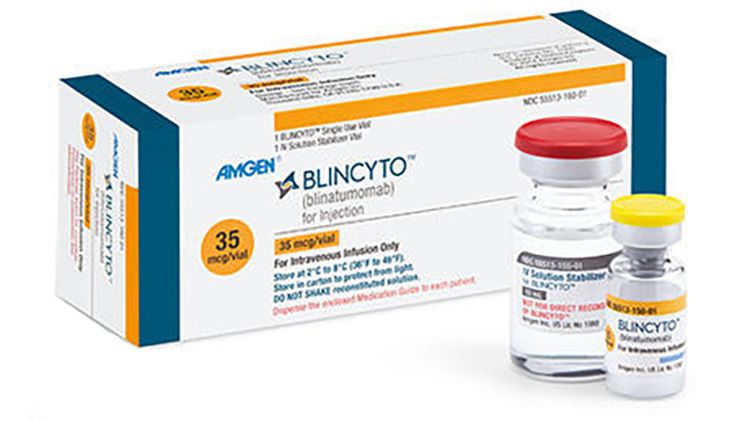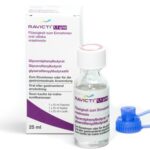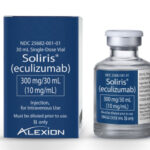Blincyto: Uses, How it Works, Side Effects, Price, Reviews

Blincyto (blinatumomab) is a prescription medicine used to treat B-cell precursor acute lymphoblastic leukemia in patients who still have detectable traces of cancer after chemotherapy.
Acute lymphoblastic leukemia is a cancer of the lymphoid line of blood cells characterized by the development of large numbers of immature lymphocytes. Symptoms may include feeling tired, pale skin color, fever, easy bleeding or bruising, enlarged lymph nodes, or bone pain.
Blincyto is also used in adults who have been treated for B-precursor ALL and have minimal residual disease (which means that they have some detectable cancer cells in their body).
Blincyto is used in patients who are ‘Philadelphia-chromosome-negative’ (Ph-negative) which means that the patients’ cancer cells do not have an abnormal chromosome called the Philadelphia chromosome, and in patients who have the protein CD19 on their cancer cells (CD19-positive).
Blincyto can also be used in patients who are ‘Philadelphia-chromosome-positive’ (Ph-positive) if their cancer has not responded to previous treatment with at least two medicines called tyrosine kinase inhibitors and they have no alternative treatment options. Blincyto contains the active substance blinatumomab.
The approval of Blincyto in these patients is based on a study that measured response rate and duration of response (MRD response rate and hematological relapse-free survival). Continued approval for this indication may be contingent upon verification and description of clinical benefit in the confirmatory trials.
How does Blincyto work?
In B-precursor ALL, certain cells that give rise to B cells (a type of white blood cell) multiply too quickly and eventually these abnormal cells replace normal blood cells.
The active substance in Blincyto, blinatumomab, is an antibody that has been designed to attach to a protein (CD19) found on B cells, including ALL cells. It also attaches to a protein (CD3) on T cells (another type of white blood cell).
Blincyto therefore acts as a ‘bridge’ bringing T cells and B cells together and causing the T cells to release substances that eventually kill the cancerous B cells.
What benefits of Blincyto have been shown in studies?
Blincyto has been studied in two main studies in adults with B-precursor ALL whose leukaemia had come back or had not improved with treatment. Patients were given Blincyto for up to five treatment cycles and Blincyto was not compared with any other treatment. The main measure of effectiveness was based on the percentage of patients whose ALL improved after two treatment cycles, measured as resolution of signs of leukaemia and a normalisation or improvement in blood cell counts.
The first study involved 189 patients with Ph-negative B-cell precursor ALL and found that it improved in 43% (81 out of 189) of patients given Blincyto. In most patients whose ALL improved, there was no evidence of cancer cells. Patients lived for an average of around six months before the cancer came back, which could enable suitable patients to have a blood stem cell transplant.
The second study was in patients with Ph-positive B-cell precursor ALL who were previously treated with at least two tyrosine kinase inhibitors. Results showed that for 36% (16 out of 45) of patients their ALL improved.
A study in 70 children aged 1 year and above with Ph-negative B-precursor ALL found that in 33% of patients treatment with Blincyto led to a resolution of the disease.
Another study in 108 children above 28 days of age with relapsed high-risk Ph-negative B-precursor ALL found that when Blincyto was used as part of the consolidation therapy, 33% of patients had events (such as relapse after responding to treatment or lack of response) compared with 57% of patients on standard consolidation chemotherapy.
Blincyto has also been studied in a main study in 116 patients with minimal residual disease. In the study, Blincyto was not compared with any other treatment. Results showed that around 78% of patients did not have measurable residual cancer cells after treatment with Blincyto.
What are the risks associated with Blincyto?
The most common side effects with Blincyto (which may affect more than 1 in 10 people) are infections, fever, infusion-related reactions (like fever, changes in blood pressure and rash), headache, febrile neutropenia (low levels a type of white blood cell counts called neutrophils with fever), constipation, nausea (feeling sick), diarrhoea, vomiting, anaemia (low red blood cell counts), oedema (swelling because of fluid retention), neutropenia (low levels of neutrophils, a type of white blood cell), leucopenia (low levels of white blood cell), thrombocytopenia (low platelet count), blood tests showing changes in liver function, tremor (shaking), back pain, chills, low blood pressure, low levels of immunoglobulins (antibodies), cytokine release syndrome (a life-threatening condition that can cause fever, vomiting, shortness of breath, pain and low blood pressure), rapid heartbeat, insomnia (difficulty sleeping), pain in the arms and legs, abdominal (belly) pain, cough and rash.
The most serious side effects were infections, neutropenia with or without fever, neurological events (such as confusion, shaking, dizziness, numbness or tingling), cytokine release syndrome, and tumour lysis syndrome (a life-threatening complication due to the breakdown of cancer cells). For the full list of side effects of Blincyto, see the package leaflet.
Blincyto must not be given to breastfeeding women. For the full list of restrictions, see the package leaflet.
What measures are being taken to ensure the safe and effective use of Blincyto?
The company that markets Blincyto will provide data from two studies looking at the safety and use of Blincyto in clinical practice.
The company will also provide patients and healthcare professionals with educational materials on how to give Blincyto and how to manage risks with the medicine. Patients will also be provided with a patient alert card.
Recommendations and precautions to be followed by healthcare professionals and patients for the safe and effective use of Blincyto have also been included in the summary of product characteristics and the package leaflet.
As for all medicines, data on the use of Blincyto are continuously monitored. Suspected side effects reported with Blincyto are carefully evaluated and any necessary action taken to protect patients.
You are encouraged to report negative side effects of prescription drugs to the FDA. Visit www.FDA.gov/medwatch or call 1-800-FDA-1088. Please see the Medication Guide and full Prescribing Information including Box Warning.
How much does Blincyto cost?
| Quantity | Per unit | Price |
| 1 Intravenous Powder For Injection | $4,438.25 | $4,438.25 |





